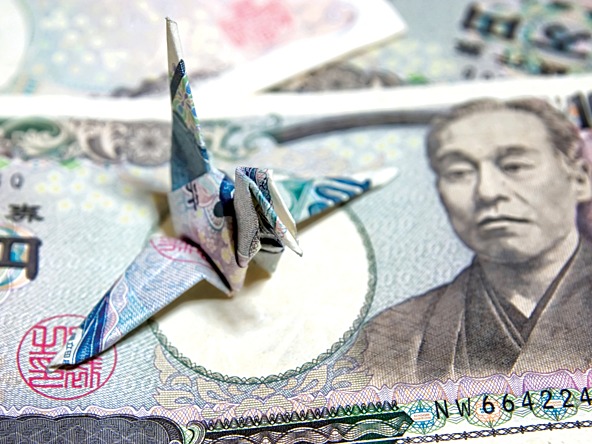Spending habits

Begging in China has gone cashless. The growing trend for e-payments, which resulted in 58.8tn renminbi (US$8.8tn) of mobile payment transactions in 2016, has seemingly made its way to the streets.
Some of the country’s most needy are now accepting donations via QR codes hung around their necks or, in a nod to more traditional methods, stuck to the side of a tin cup.
It has been claimed that this is a ruse by local businesses; beggars are paid to encourage people to scan QR codes so their user details can be harvested and sold. However, it is indicative of the rise – and widespread acceptance – of e-payments in China, where the market is dominated by Alipay and WeChat.
Similarly, in South Korea, LG CNS’s mobile-payment company, Kakao Pay, recently surpassed 10m users, Samsung Pay doubled its active monthly mobile payment users to 6.44m, and the country’s central bank announced it was aiming to be coinless by 2020.
In Japan, however – despite its reputation as a leader in the adoption of future-facing technologies – there remains a strong reliance on tried-and-tested methods of payment, and very little indication of a willingness to go cashless. The use of cash, and interacting with physical currency, is still a strong part of everyday life, in and out of the home.
Figures from 2016 indicate that more than half ( 52%) of Japan’s household wealth is invested in cash, with only 1.5% in government bonds, 5% in trusts, 8% in stocks and almost 30% in pension and insurance funds.
Several factors contribute to Japanese anxiety around moving away from cash, most of which centre on control, personal autonomy and a fear of debt; in short, potentially losing control of spending.
Some of this can be traced back to 1923, when Tokyo was devastated by an earthquake, resulting in private insurance companies defaulting. Then came the Great Depression and the war with China. In 1945, American bombers destroyed more than 40% of Japan’s urban centres, leaving three million people dead and almost nine million homeless.
Japan’s answer to these recurring disasters was simple: nationalise risk in most aspects of life, with universal health insurance, great public education and the world’s largest savings programme – the Japan Post Bank savings account. However holes in the safety net began to appear in 1989, when the asset-prices bubble burst; Japan’s extremely high private savings led to overly confident institutions giving risky loans that eventually caused dozens of banks to default.
Three decades of recession and a number of financial crises led Japanese consumers to move away from bonds and pension funds, to cash, stocks and foreign exchange.
While Japan’s safe streets mean carrying lots of cash holds little fear – many people withdraw large sums each week or month as a way of budgeting for that period – it is primarily mistrust and fear of corruption, linked to this history, that makes people cling to tangible money. The physicality of cash also makes for greater awareness of your finances; you can only spend what you physically have.
Spending in Japan is traditionally monitored using kakeibo, a household accounts book. A member of the household will manually record all incomings and outgoings, and allocate available cash to any financial commitments. The success of apps such as Zaim and Money Forward – digital kakeibo platforms with around 10m users in total – highlights the importance modern Japanese consumers place on tracking and controlling their cash.
Traditional practices and rituals surrounding cash are still prevalent today. These include obtaining clean, unused bills from the bank when gifting; wrapping cash in envelopes or pouches for special occasions such as weddings, new year and funerals; and using cash for large purchases to mark a life milestone – such as a first car, an engagement ring or a deposit on a house.
Such purchases, where using cash is by far the least convenient option, demonstrate how physical money is still seen as sacred.
Things are starting to change, however. In recent years, there have been some efforts to open the Japanese market to the cashless movement. Visa has pushed campaigns encouraging the uptake of non-cash payments, offering debit, pre-paid and credit services to ease consumers into going cashless.
When Apple Pay launched in Japan, it partnered with trusted service brands – such as Suica (a prepaid rail-travel card), credit card company JCB and e-commerce firm Rakuten – to demonstrate, through its advertising campaigns, a multitude of uses. Rakuten and chat app Line have also used their equity to launch e-payment offerings.
Meanwhile, e-money cards distributed by Japanese retailers – such as the Aeon Group’s Waon, the aforementioned Suica card, and Nanaco, which can be used at Japanese 7-Eleven stores and Denny’s restaurants – reflect the population’s need for a sense of physicality when it comes to currency.
In some instances, retail cards alleviate people’s fear of spending thoughtlessly through the use of sound and light. Lights indicate when cards should be touched on sensors, and many cards make noises – ranging from the sound of coins being jingled to a barking dog – when a payment is made.
These local players are helping to plant the seeds of cashless behaviour among consumers, by mirroring traditional Japanese rituals and respecting the importance that people attach to hard cash.

We hope you enjoyed this article.
Research Live is published by MRS.
The Market Research Society (MRS) exists to promote and protect the research sector, showcasing how research delivers impact for businesses and government.
Members of MRS enjoy many benefits including tailoured policy guidance, discounts on training and conferences, and access to member-only content.
For example, there's an archive of winning case studies from over a decade of MRS Awards.
Find out more about the benefits of joining MRS here.











0 Comments